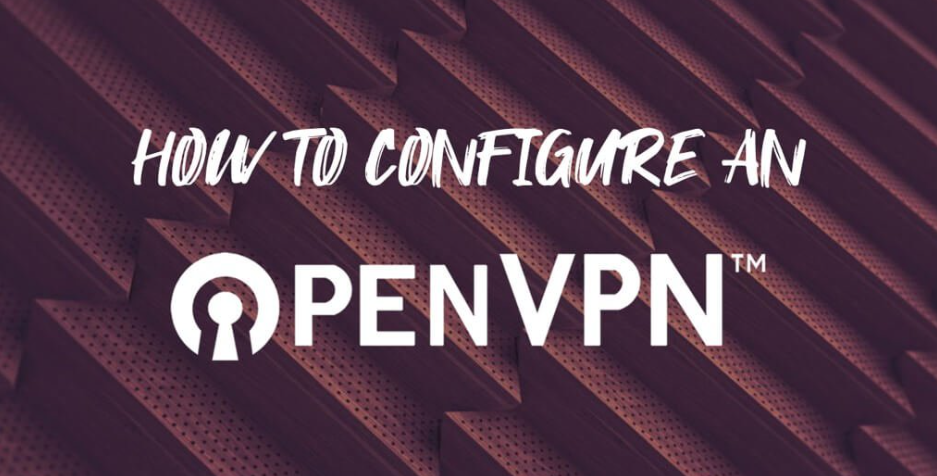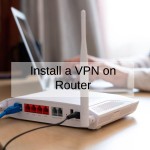In today's digital landscape, where online privacy and security are of utmost concern, having a reliable Virtual Private Network (VPN) is essential. Among the myriad of VPN options available, OpenVPN stands out for its robust security features and flexibility. If you're new to OpenVPN or looking to enhance your configuration skills, you've come to the right place. In this guide, we'll walk you through everything you need to know to configure OpenVPN effectively, from downloading the software to optimizing your settings for a seamless and secure browsing experience.

OpenVPN Configuration
OpenVPN is a powerful open-source VPN solution known for its reliability and security. Whether you're a business looking to secure your network or an individual seeking privacy online, understanding how to configure OpenVPN is invaluable. By following the steps outlined in this guide, you'll gain the knowledge and confidence to set up OpenVPN with ease.
Setting the Stage VPN Download
Before diving into the configuration process, you'll need to open vpn download software. While there are many VPN options available, OpenVPN is renowned for its trustworthiness and transparency. To download OpenVPN securely, visit the official website or trusted repositories to ensure you're getting the legitimate software.
Choosing the Best Free VPN Option
For those on a budget, finding the best free VPN is crucial. With OpenVPN, you have the option to utilize free VPN services that offer reliable security and performance. When selecting a free VPN, consider factors such as encryption protocols, server locations, and data limits to ensure your privacy and browsing experience are protected.
Installing the OpenVPN App
Once you've downloaded the Open vpn app software, the next step is installation. Whether you're using Windows, macOS, Linux, or mobile devices, OpenVPN offers cross-platform compatibility. Follow the step-by-step instructions provided by OpenVPN to install the application securely on your preferred device.
Understanding VPN Gateway Configuration
VPN gateways play a vital role in routing traffic between your device and the VPN server. With OpenVPN, configuring VPN gateway is straightforward, allowing you to customize settings for optimal performance and security. Whether you're setting up a single gateway or a complex network infrastructure, OpenVPN provides the tools you need to ensure secure connectivity.
Exploring OpenVPN Connect
OpenVPN Connect is the official client application for OpenVPN, available for both desktop and mobile platforms. With OpenVPN Connect, you can easily establish secure connections to OpenVPN servers with just a few clicks. Whether you're a novice user or an experienced VPN enthusiast, OpenVPN Connect offers a user-friendly interface and robust features to enhance your VPN experience.
Revisiting OpenVPN Download Procedures
Openvpn download is a critical step in the configuration process, and it's essential to ensure you're obtaining the software from a trusted source. Be wary of unofficial sources or third-party repositories, as they may distribute compromised or outdated versions of the software. To download OpenVPN securely, always visit the official website or trusted distributors recommended by the OpenVPN community.
Leveraging Free VPN Services
While premium VPN services offer advanced features and dedicated support, vpn free services can be a viable option for casual users or those on a tight budget. With OpenVPN, you have access to various free VPN providers that offer reliable security and performance. When choosing a free VPN service, prioritize providers that offer strong encryption, no-logs policies, and transparent privacy practices.
Accessing VPN Services Online
With the rise of vpn online services, accessing secure and private connections has never been easier. Whether you're traveling abroad, working remotely, or simply browsing the web, online VPN services offer convenient solutions for protecting your data and identity. With OpenVPN, you can connect to VPN services online using a wide range of devices and operating systems, ensuring seamless access to secure connections wherever you go.
Simplifying VPN App Download
Downloading VPN applications should be a straightforward process, but with so many options available, it can be overwhelming to choose the right one. With OpenVPN, you can simplify the app download process by selecting the official OpenVPN Connect client, available for various platforms. By vpn app download from trusted sources, you can ensure you're getting the authentic software with the latest security updates and features.
Navigating the VPN Application Landscape
The VPN application market is saturated with options, ranging from free to premium services with varying features and performance. With OpenVPN, you have access to a diverse ecosystem of VPN application tailored to different needs and preferences. Whether you're looking for a user-friendly interface, advanced customization options, or specialized security features, OpenVPN offers a range of applications to suit your requirements.
Best Practices for OpenVPN Configuration
Configuring OpenVPN requires attention to detail and adherence to best practices to ensure optimal performance and security. Whether you're setting up a VPN server or connecting to an existing network, following these guidelines will help you configure OpenVPN effectively
- Choose strong encryption protocols, such as AES-256, for maximum security.
- Implement multi-factor authentication to add an extra layer of protection.
- Regularly update your OpenVPN software to patch vulnerabilities and improve performance.
- Monitor network traffic and log files for any suspicious activity or security breaches.
- Educate users on proper VPN usage and security practices to mitigate risks.
Troubleshooting Common OpenVPN Issues
Despite its reliability, OpenVPN may encounter occasional issues that require troubleshooting. From connectivity problems to configuration errors, understanding common OpenVPN issues and their solutions is essential for maintaining a secure and stable VPN connection. Whether you're a novice user or an experienced administrator, having the knowledge and tools to troubleshoot OpenVPN issues will help you resolve problems quickly and effectively.
Advanced OpenVPN Configuration Options
While OpenVPN offers a user-friendly interface for basic configuration, advanced users may wish to explore additional options for customization and optimization. With OpenVPN, you can fine-tune settings such as routing, firewall rules, and encryption parameters to tailor the VPN experience to your specific requirements. Whether you're optimizing performance for high-speed connections or enhancing security for sensitive data, OpenVPN provides the flexibility and control you need to configure your VPN infrastructure with precision.
Empowering Your VPN Experience
Mastering OpenVPN configuration is essential for securing your online activities and protecting your privacy. By following the steps outlined in this guide, you can confidently set up and configure OpenVPN for a seamless and secure browsing experience. Whether you're a novice user or an experienced administrator, OpenVPN offers the flexibility and reliability you need to safeguard your data and enjoy unrestricted access to the internet. Start configuring OpenVPN today and take control of your online privacy and security.
How to Set Up Config OpenVPN
Setting up OpenVPN may seem daunting at first, but with the right guidance, it can be a straightforward process. Here's a step-by-step overview of how to configure OpenVPN
Choose Your Operating System OpenVPN is compatible with a wide range of operating systems, including Windows, macOS, Linux, iOS, and Android. Select the version that matches your device's OS.
Download OpenVPN Software Visit the official OpenVPN website to download the appropriate software for your operating system. Ensure you're downloading from a trusted source to avoid malware or security risks.
Install OpenVPN Once the download is complete, follow the installation instructions provided by OpenVPN. The installation wizard will guide you through the process, making it easy to set up the software on your device.
Configuration File After installing OpenVPN, you'll need a configuration file to connect to a VPN server. You can obtain this file from your VPN provider or create one yourself using OpenVPN's configuration generator.
Connect to VPN Server Once you have the configuration file, open the OpenVPN client, import the configuration file, and connect to the desired VPN server. Enter your credentials if required, and you're ready to browse securely.
Best VPN Right Now Why Choose OpenVPN?
With countless VPN providers vying for your attention, you may wonder why OpenVPN is the best choice. Here are some reasons why OpenVPN stands out as the top VPN option right now
Open-Source OpenVPN is open-source software, meaning its source code is freely available for anyone to inspect and modify. This transparency ensures a higher level of security and trustworthiness.
Strong Security OpenVPN employs robust encryption protocols, such as AES-256, to secure your internet traffic and data. It also supports advanced authentication methods, including certificates and multi-factor authentication.
Cross-Platform Compatibility Whether you're using Windows, macOS, Linux, iOS, or Android, OpenVPN offers seamless compatibility across all major operating systems and devices.
Flexibility and Customization With OpenVPN, you have full control over your VPN configuration. You can customize settings such as encryption algorithms, DNS servers, and routing options to suit your specific needs.
Community Support OpenVPN has a thriving community of users and developers who provide ongoing support, troubleshooting assistance, and regular updates to the software.
Easy Way to Install Config OpenVPN
Installing and configuring OpenVPN doesn't have to be complicated. Here's a simplified approach to installing and configuring OpenVPN
Choose a VPN Provider Select a reputable VPN provider that offers OpenVPN support. Consider factors such as server locations, connection speed, and privacy policy when choosing a provider.
Download OpenVPN Client Once you've signed up for a VPN service, download the OpenVPN client software from the provider's website or app store. Most VPN providers offer dedicated apps for various devices and operating systems.
Import Configuration File After installing the OpenVPN client, download the configuration file provided by your VPN provider. This file contains the settings needed to connect to the VPN server.
Connect to VPN Server Open the OpenVPN client, import the configuration file, and connect to the desired VPN server. Enter your login credentials if prompted, and you're all set to browse securely.
Configuration Config OpenVPN Automatic and Manual Options
When configuring OpenVPN, you have the option to use automatic or manual configuration methods. Let's explore each option in detail
Automatic Configuration Some VPN providers offer automated setup tools or apps that streamline the configuration process. These tools typically handle everything from downloading the configuration file to setting up the VPN connection, making it easy for users to get started quickly.
Manual Configuration If you prefer more control over your VPN setup, you can opt for manual configuration. This involves downloading the configuration file from your VPN provider's website and manually entering the settings into the OpenVPN client. While manual configuration may take more time and effort, it allows for greater customization and flexibility.
Why and When to Use Config OpenVPN
There are several scenarios in which using OpenVPN configuration is beneficial
Privacy Protection OpenVPN encrypts your internet traffic, preventing ISPs, hackers, and government agencies from monitoring your online activities.
Secure Remote Access If you need to access sensitive data or resources on a remote network, OpenVPN provides a secure connection that protects your data from interception or eavesdropping.
Bypassing Geographical Restrictions OpenVPN allows you to bypass censorship and geographical restrictions by connecting to VPN servers located in different countries. This enables you to access region-locked content and services from anywhere in the world.
Why Should You Use Config OpenVPN?
Here are some compelling reasons to choose OpenVPN for your VPN needs
Trusted Security OpenVPN is renowned for its strong security features, including encryption, authentication, and tunneling protocols, ensuring your data remains confidential and protected from unauthorized access.
Reliability and Stability OpenVPN is known for its reliability and stability, providing a consistent and uninterrupted VPN connection even in challenging network conditions.
Ease of Use Despite its advanced features, OpenVPN offers a user-friendly interface and intuitive setup process, making it accessible to both novice and experienced users alike.
Community Support With a large and active user community, OpenVPN provides ample support, resources, and documentation to help you troubleshoot any issues or questions you may encounter.
How to Get a Config OpenVPN
Getting an OpenVPN configuration file is easy. Here's how
Sign Up for a VPN Service Choose a VPN provider that offers OpenVPN support and sign up for a subscription plan.
Download Configuration File After signing up, log in to your VPN account and navigate to the setup or download section. Here, you'll find the option to download the OpenVPN configuration file for your desired server location.
Import Configuration File Once downloaded, import the configuration file into the OpenVPN client software on your device. This file contains the settings needed to connect to the VPN server.
Connect to VPN Server After importing the configuration file, simply connect to the VPN server through the OpenVPN client. Enter your login credentials if prompted, and you're ready to browse securely.
Configuring OpenVPN involves setting up various parameters such as certificates, keys, network settings, and encryption options. Here's a detailed comparison across different aspects
Configuration File Location
- Server-side Configuration
- Using apt package manager The server configuration file is typically located at
/etc/openvpn/server.conf. - Compiling from source The configuration file location may vary depending on the installation method and configuration options chosen during compilation.
- Using third-party repositories Configuration file locations may vary depending on the repository and the specific setup.
Key and Certificate Management
- Server-side Configuration
- Using apt package manager The server key and certificate files are usually placed in the directory specified in the server configuration file, often in
/etc/openvpn/keys/. - Compiling from source Key and certificate management follows the standard practices outlined in the OpenVPN documentation. Users may specify the key and certificate locations during the configuration process.
- Using third-party repositories Key and certificate management practices may vary depending on the repository and any additional tools provided.
Network Configuration
- Server-side Configuration
- Using apt package manager Network configuration, including IP addressing, routing, and subnet allocation, is specified within the server configuration file.
- Compiling from source Users have flexibility in specifying network configurations during the configuration process, similar to the apt package manager method.
- Using third-party repositories Network configuration may be pre-configured or customizable depending on the repository and setup.
Encryption and Authentication
- Server-side Configuration
- Using apt package manager Encryption and authentication settings are defined within the server configuration file, including cipher suites, HMAC authentication, and TLS parameters.
- Compiling from source Users can customize encryption and authentication options during the configuration process, with access to the latest encryption algorithms and features.
- Using third-party repositories Encryption and authentication settings may be pre-configured or customizable, depending on the repository and any additional security features provided.
Client Configuration
- Client-side Configuration
- Using apt package manager Client configuration files are typically located in
/etc/openvpn/client/ or similar directories. Users can customize these files to specify connection parameters and authentication details. - Compiling from source Client configuration follows standard practices outlined in the OpenVPN documentation, with users creating configuration files tailored to their specific setups.
- Using third-party repositories Client configuration may be pre-configured or customizable, depending on the repository and any additional tools or scripts provided.
Advantages and Benefits of Config OpenVPN
Using OpenVPN configuration offers numerous advantages and benefits
Enhanced Privacy OpenVPN encrypts your internet traffic, masking your IP address and preventing third parties from tracking your online activities.
Improved Security With strong encryption and authentication protocols, OpenVPN protects your data from interception, hacking, and surveillance.
Access to Geo-Restricted Content OpenVPN allows you to bypass geographical restrictions and access region-locked content from anywhere in the world.
Secure Remote Access OpenVPN enables secure remote access to corporate networks, allowing employees to work from anywhere without compromising data security.
Configuring OpenVPN is a straightforward process that offers unparalleled privacy, security, and flexibility. Whether you're looking to protect your personal data, bypass censorship, or securely access remote resources, OpenVPN provides the tools and features you need to stay safe and anonymous online. By following the steps outlined in this guide and understanding the advantages of using OpenVPN, you can enjoy a safer and more secure internet experience.
With its robust security features, cross-platform compatibility, and user-friendly interface, OpenVPN remains the best VPN option available today. Don't compromise on your online privacy and security—choose OpenVPN and take control of your digital life.
Commonly Asked Questions and Answers on How to Configure OpenVPN
Question Where is the server configuration file located?
- Answer The server configuration file is typically located at
/etc/openvpn/server.conf when using the apt package manager. For other installation methods, it may vary.
Question How do I manage keys and certificates for OpenVPN?
- Answer Keys and certificates are typically managed using tools provided by OpenVPN, such as
easy-rsa. These tools help generate, sign, and manage certificates for use with OpenVPN.
Question Can I customize encryption and authentication settings?
- Answer Yes, encryption and authentication settings can be customized within the server configuration file. Users can specify cipher suites, HMAC authentication, and TLS parameters according to their security requirements.
Question How do I configure client-side settings for OpenVPN?
- Answer Client configuration files are typically located in directories such as
/etc/openvpn/client/. Users can create or customize these files to specify connection parameters, authentication details, and other options.
Question Are there any tools or scripts to simplify OpenVPN configuration?
- Answer Yes, there are tools like
openvpn-install or openvpn-admin that provide scripts to simplify the installation and configuration process. These tools may be available through third-party repositories or community contributions.











